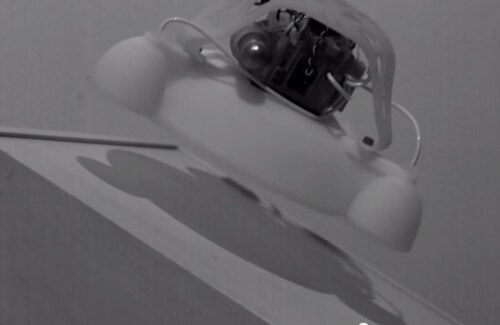One of the challenges in developing robots for use in disaster-prone areas is the need for high offense on the one hand and the robot's resistance to challenging terrain. The robot developed inspired by the frog, consists of a combination of flexible and rigid elements. This combination allows the robot, according to the researchers, to jump from place to place and land on the right side allowing continued movement, with minimal damage to the robot's structure.

By: Dafna Haim-Langford
Continuing the development of robots inspired by reptiles, insects, bird species and fish, a collaboration between the Wyss Institute at Harvard for the development of technologies inspired by nature, and the Harvard School of Engineering led to a leap forward by developing a robot inspired by the frog.
One of the challenges in developing robots for use in disaster-prone areas is the need for high offense on the one hand and the robot's resistance to challenging terrain. The robot developed inspired by the frog, consists of a combination of flexible and rigid elements. This combination allows the robot, according to the researchers, to jump from place to place and land on the right side allowing continued movement, with minimal damage to the robot's structure.
The current development will enable the future development of robots with a flexible and durable structure, for movement in narrow spaces and to move between obstacles in an unpredictable and even dangerous environment in terms of the surface.
The robot, developed under the leadership of Nicholas Bartlett, was built using a XNUMXD printer, and in nine different layers with a variable flexibility range, from extremely flexible to rigid. Inside the hard core of the robot are the battery and the air compressor, which enable the robot to be driven. More flexible parts make up the body and the three legs used for jumping and landing.
In order to jump, the robot inflates one leg to tilt the body in the desired direction. A mixture of butane and oxygen is injected into the top to create combustion. At the moment of ignition, the body of the robot, which is actually a large balloon, inflates rapidly, pushing the robot off the ground and causing it to jump in the air for a distance of about a meter. The soft layers are able to absorb the landing, while preserving the other elements from which the robot is built.
The development of robots made of flexible materials instead of metals is today at the center of research on the subject, when the need to develop moving parts made of flexible materials is important not only for robots operating in disaster-prone areas, but also in production lines that combine people with machines. These robots have the ability to adapt to the environment, are safer for humans and are more durable than the rigid robots.
